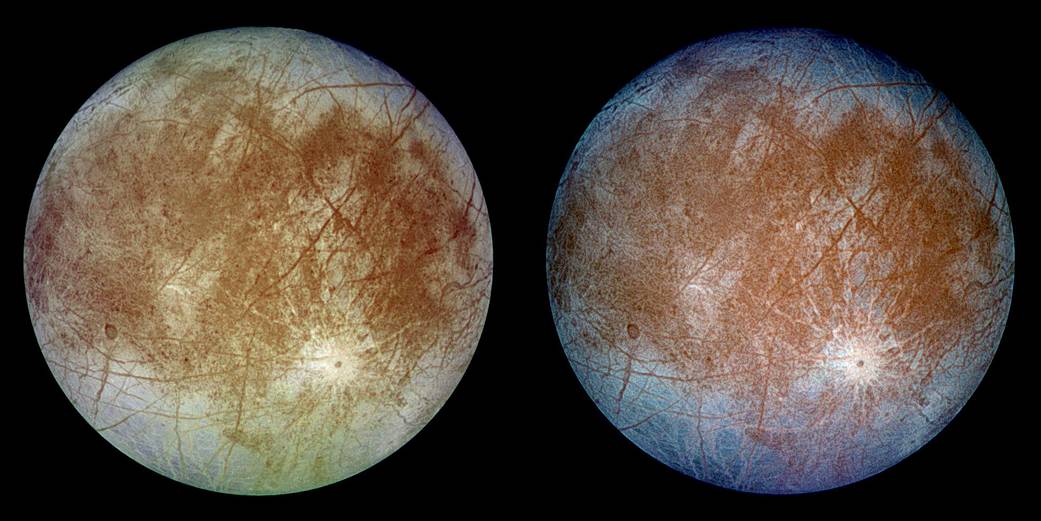Galileo Galilei discovered Jupiter’s moon Europa in 1610. More than four centuries later, astronomers are still making discoveries about its icy surface. With a diameter of almost 2,000 miles, an orbit equivalent to 3.5 Earth days and a mass about 65 percent of Earth’s Moon, Europa is considered by some scientists a likely place to look for present-day environments suitable for life.
Europa’s water-ice surface is crisscrossed by long, linear fractures. Like our planet, Europa is thought to have an iron core, a rocky mantle and an ocean of salty water. Unlike Earth, however, Europa’s ocean lies below a shell of ice probably 10 to 15 miles thick and has an estimated depth of 40 to 100 miles. The latest analysis Europa make this Jovian moon one of the most promising places in the solar system to search for life. Europa has long been a high priority for exploration because beneath its icy crust lies a salty, liquid water ocean. NASA’s Europa Clipper, targeted to launch in 2022, will be equipped with the instruments necessary to determine whether Europa possesses the ingredients necessary to support life as we know it.
This image shows two views of the trailing hemisphere of Europa. The left image shows the approximate natural color appearance of Europa. The image on the right is a false-color composite version combining violet, green and infrared images to enhance color differences in the predominantly water-ice crust of Europa.
Image credit: NASA/JPL-Caltech/DLR



























